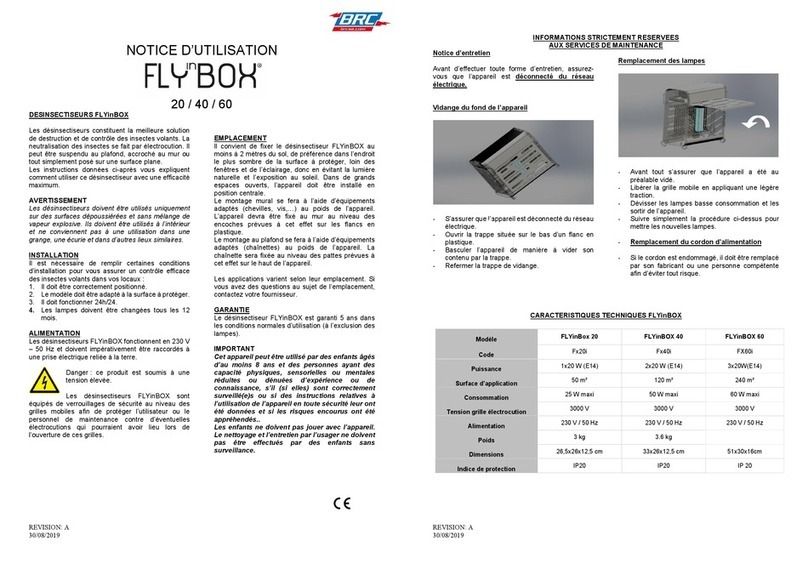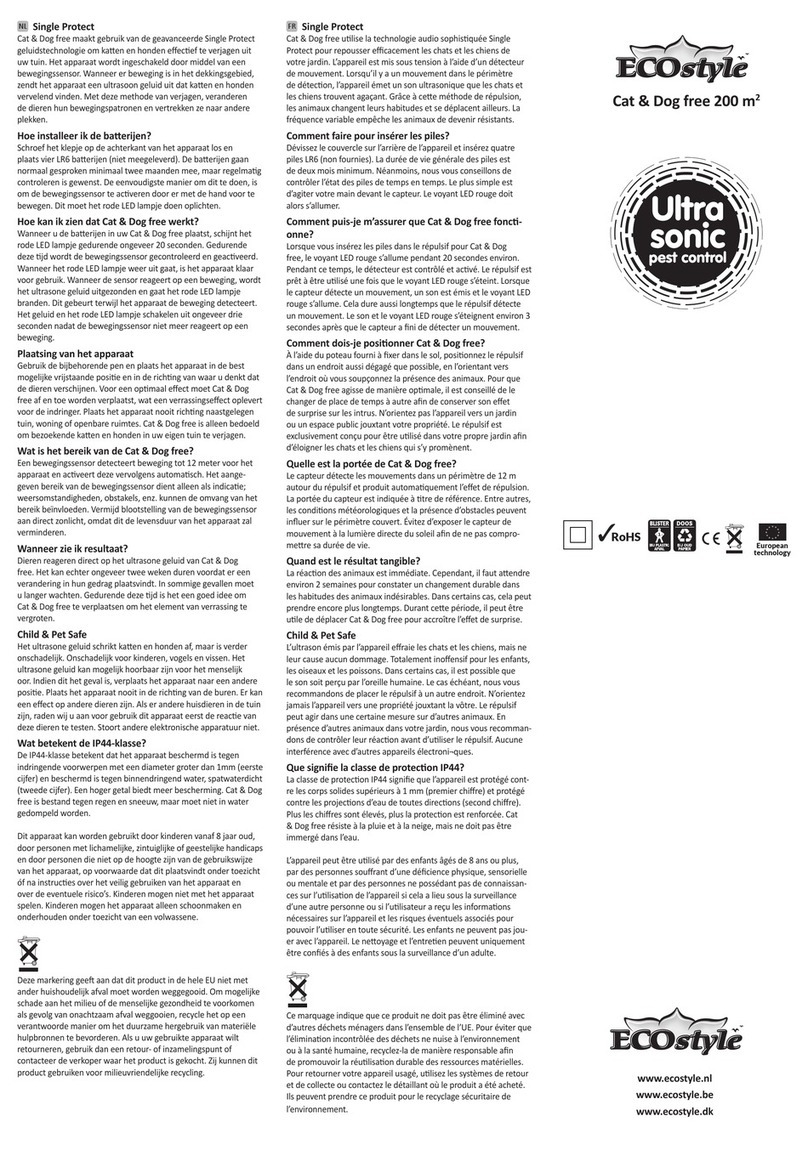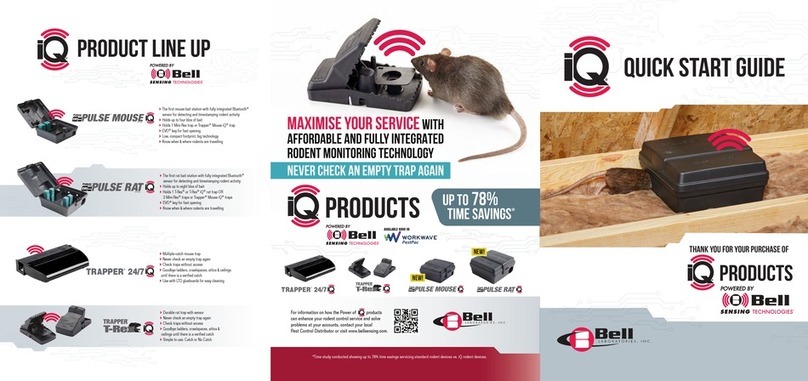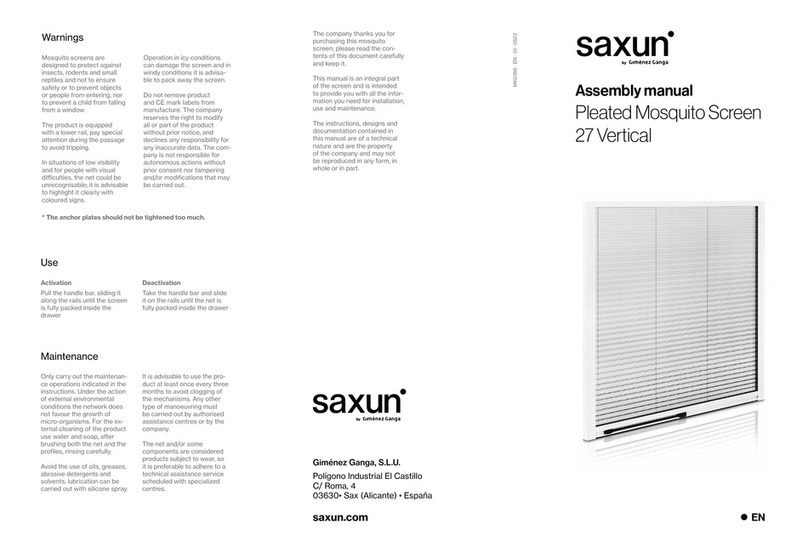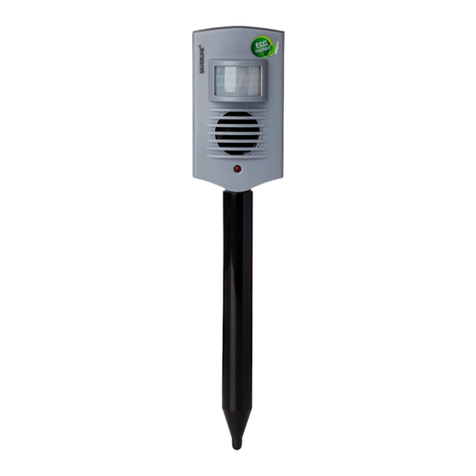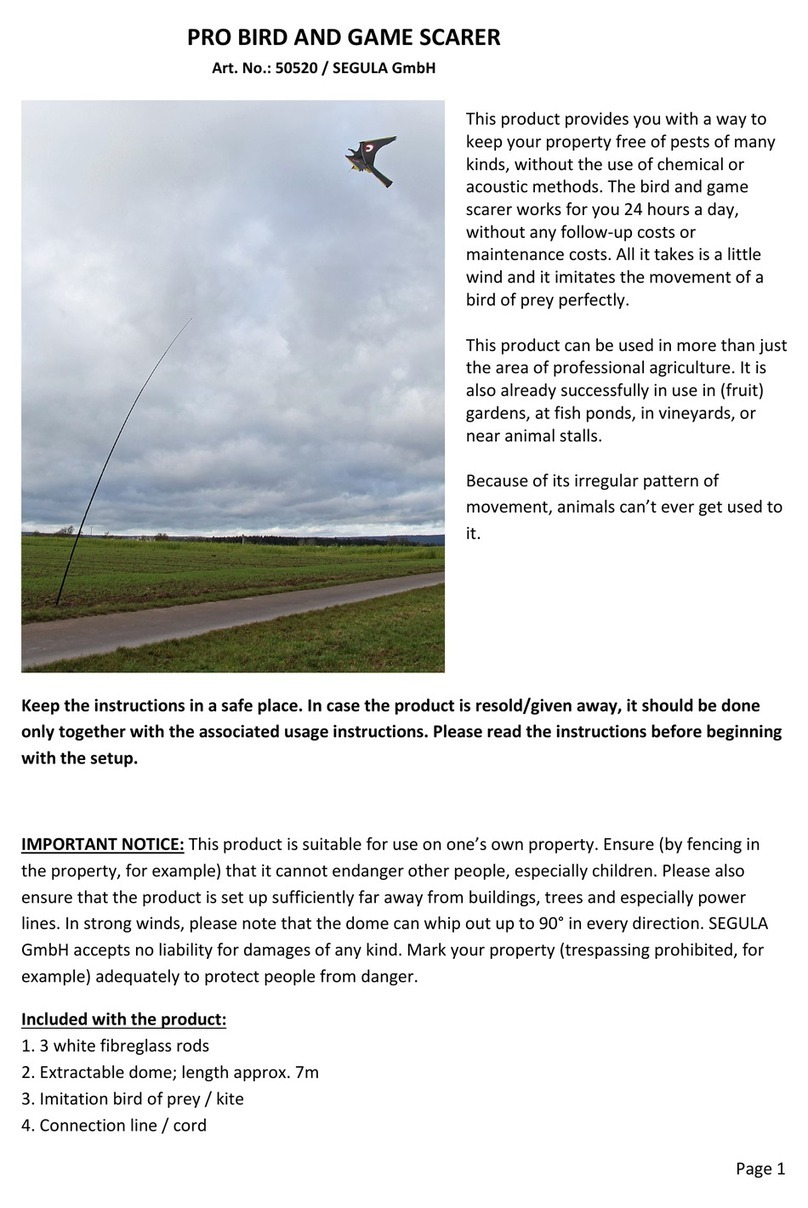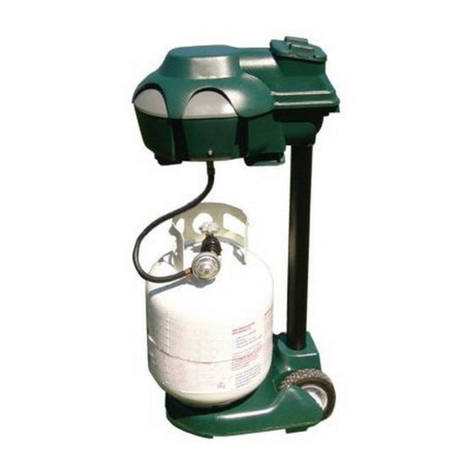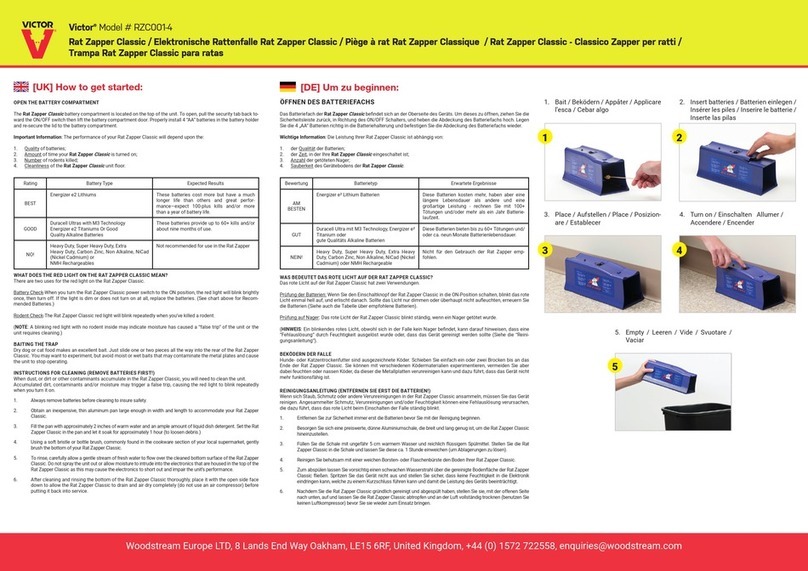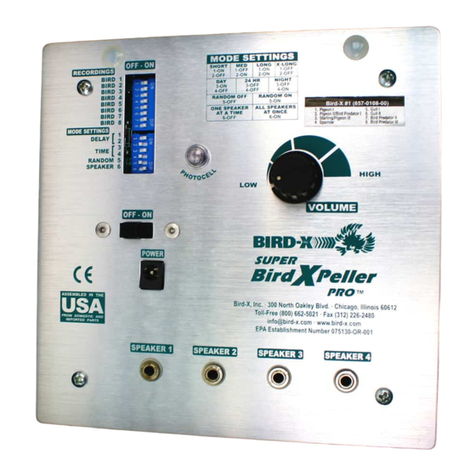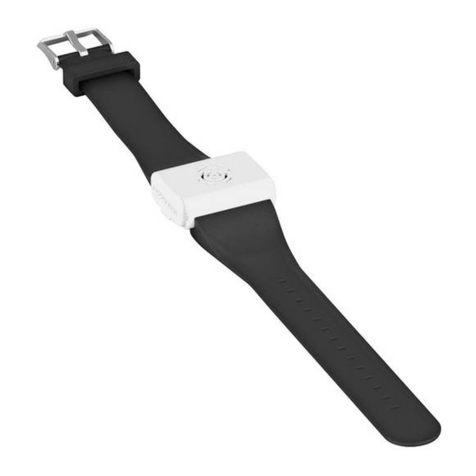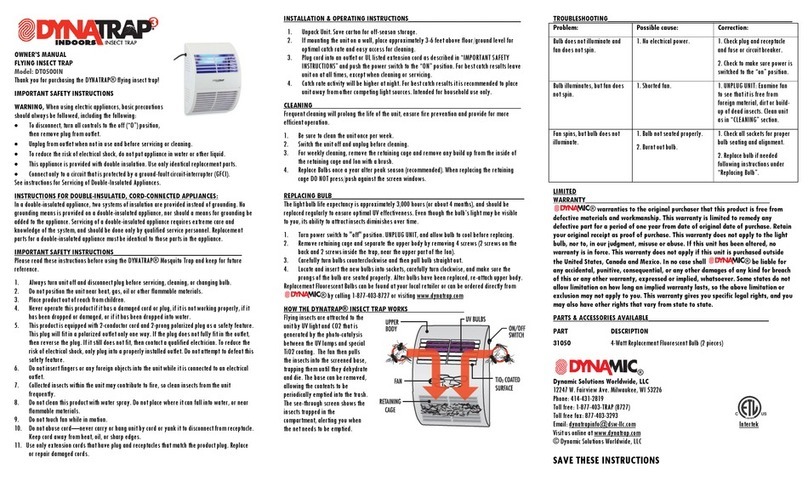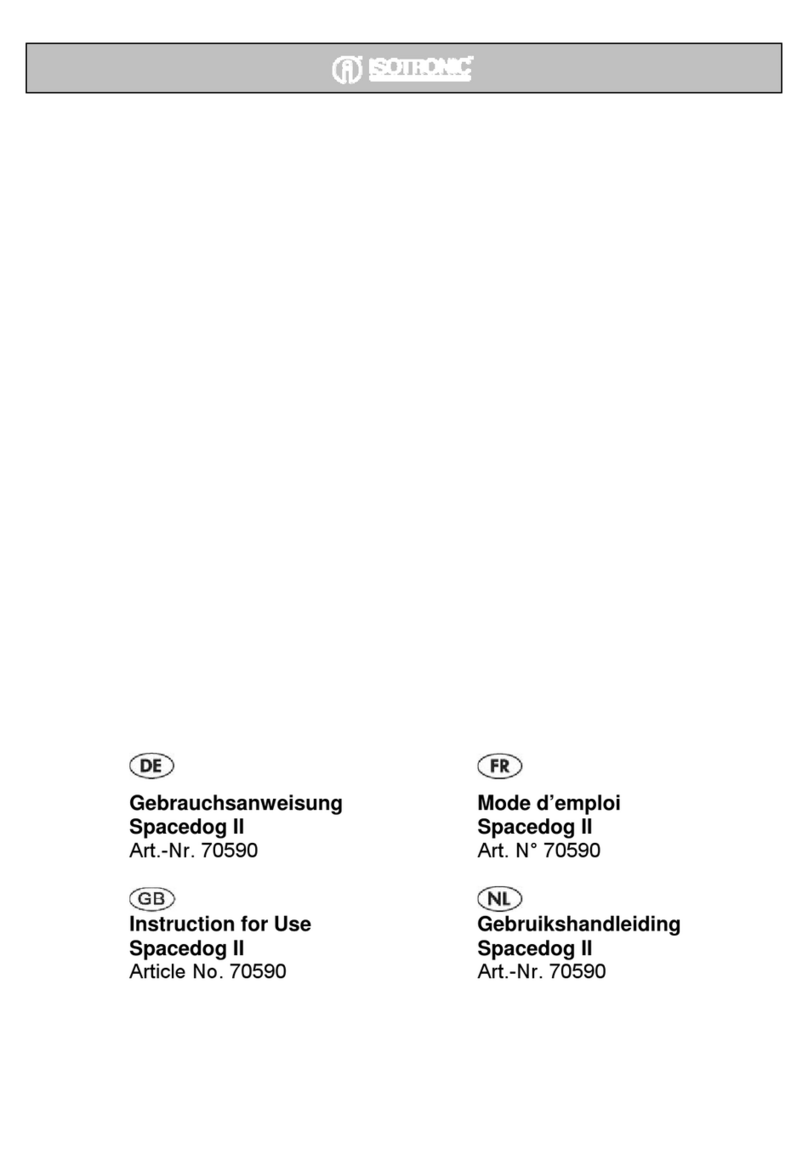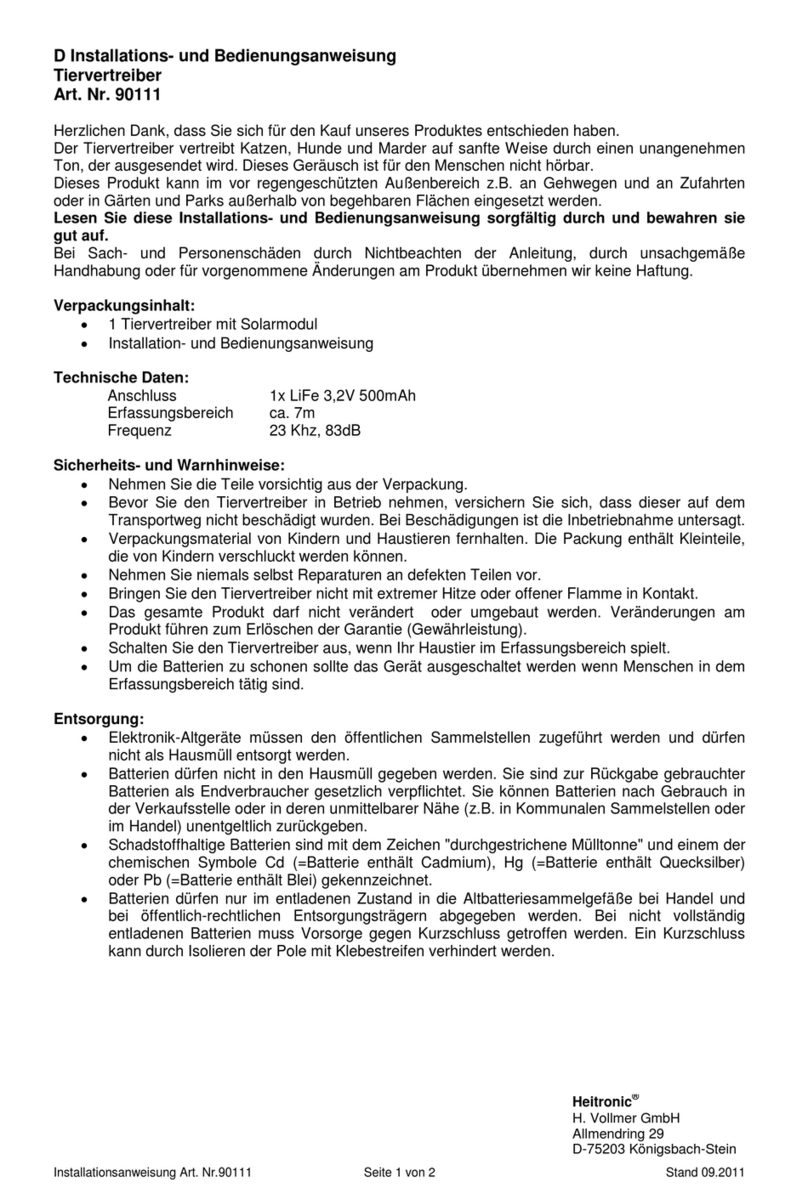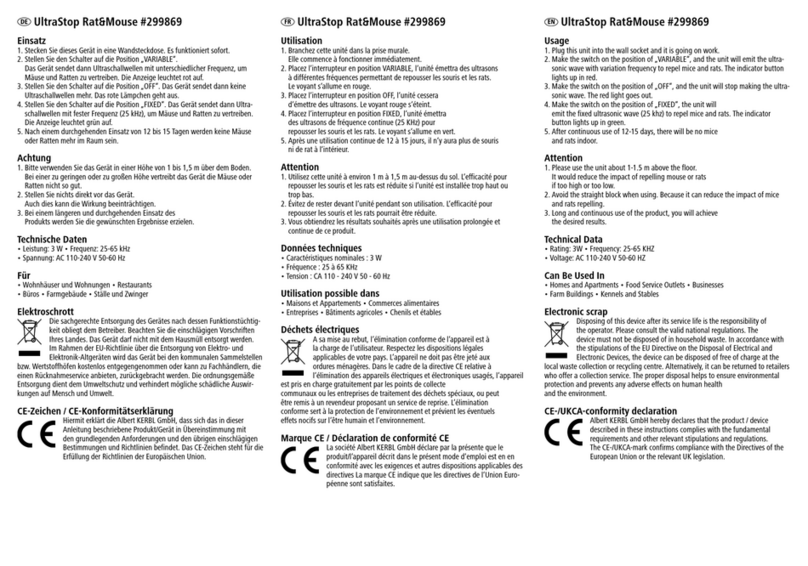
This product is fueled by propane gas, which is invisible, odorless and highly flammable. An odorant is
normally added by the manufacturer, which has a “rotten egg” smell to it. This additive can fade over
time, so leaking gas is not always detectable by smell alone.
Propane gas is heavier than air and leaking propane will sink to the lowest possible level. It can be ignited
by a spark or flame of any kind and from several feet away from a leak.
Do not use a propane tank with a capacity larger than 20lb (9.07kg). The propane tank must be
provided with a shut-off valve, arranged for vapor withdrawal and include a collar to protect the
tank’s valve.
Propane gas should be stored or used in compliance with local ordinances or codes with ANSI/NFPA 58.
ake sure the propane gas control valve is turned off when not in use.
The propane tank must always be stored outdoors, in a well ventilated area and out of the reach of
children. Never store propane in an enclosed space (house, garage, etc.).
The pressure regulator and hose assembly supplied with the osquito Trap must be used for the
connection to the propane tank. The maximum inlet gas supply is less than 30 SCFH (0,85 cm3/h).
Replacement pressure regulator and hose assemblies must be provided by Koolatron, Inc.
The mosquito trap must be used outdoors and only in a well ventilated area. If it is stored indoors,
disconnect the propane tank and properly store it outdoors. The disconnected tank must have a
threaded valve plug tightly installed.
WARNING
3
2
HOW THE BITE SHIELD™ CORDLESS OSQUITO TRAP WORKS
The MK14 Bite Shield™ Cordless Mosquito Trap utilizes the documented attractiveness of carbon dioxide (CO2),
moisture, body temperature (thermal imaging), color, shape and airflow in an effective design that captures and
kills mosquitoes. Similar traps have been in use for years by universities, state monitoring programs and researchers
around the world. The Bite Shield™ Mosquito Trap uses this traditional trapping approach, combined with the latest
in research, to turn the female mosquito’s natural hunting techniques toward seeking out the trap and thus, facilitating
their capture in a product that private home owners can use. Another major feature of MK14 is that it is cordless –
that is, no electrical or extension cords to deal with! The unit is powered by a patented internal power generated
mechanism that uses propane fuel to operate the fan and LEDs. Thus, MK14 eliminates a major safety hazard that
users might face while operating such units outdoors.
This is how the female mosquito reacts to the trap: At a fairly long distance (up to 40ft (12.2m) away), it senses the
CO2and moisture coming from the unit’s burner. This tells the mosquito that there is a “breathing” creature around.
t flies towards the source of CO2and moisture. As it travels, at a range of approx. 15 ft (4.6m), it starts to sense
temperature similar to that of a living creature (thermal imaging). The unique design of the MK-14 has two different
thermal-imaging systems (patents pending): a) static thermal imaging, where in the body of the trap, there is warmth
at the top surfaces of the “neck” similar to that of living beings. This temperature is constant and generates consistent
heat waves that attract the mosquitoes closer to trap. b) Spot thermal imaging: The black dome-like surface of the trap
is warmed up at different points to be similar to living being’s temperatures. Live beings do not have a consistent
temperature across the body. This sends a message to the mosquitoes saying that this variation of temperatures is
similar to a live animal. The top of this area consists of a vacuum air flow caused by the internal fan which pulls the
mosquitoes into the trap thanks to the unique design of the internal components of the trap. The vacuum
airflow goes straight into the receptacle with grilled openings depositing inside of it all the mosquitoes that were
attracted, where they stay trapped until they dehydrate and ultimately die.
WHERE TO PLACE
Many species of mosquitoes have an adult life span that lasts about two weeks. Approximately 3,000 species of
mosquitoes have been identified world-wide, with approximately 170 species found in the United States. Both male
and female mosquitoes feed on plant nectar, but only the female requires a blood meal. The blood feeding is
needed for each batch of eggs the female lays, typically feeding once every 3-4 days. f the mosquito is not
disturbed, during the biting process, a blood feeding usually lasts about 90 seconds and the amount of blood is
1-1/2 times its body weight. A single female mosquito may lay thousands of eggs, during her lifetime.
The female mosquito is attracted to a host by carbon dioxide (CO2), temperature, scent, color, shape, movement
and for some species, even sound. The female mosquito is usually most active between 50°F (10°C) and 95°F (35°C)
while in calm or light breeze conditions. Mosquitoes tend to travel up-wind when seeking a blood feeding.
Th plac m nt of th Mosquito Trap will gr atly aff ct th succ ss of th unit’s ability to captur mosquito s.
The largest amount of mosquitoes will be captured by positioning the Mosquito Trap 30ft (9.1m) to 40ft (12.2m) away
from the location you want to protect, in the normal down-wind direction towards where mosquitoes are
living (trees, bushes and water). To find the best starting point in your yard for trap placement, walk about 10-15ft
(3-4.6m) away from the deck (patio, porch) area that you want to primarily protect. Light a smoky incense and
watch which direction the smoke drifts while standing there. Next, move about 5-8ft (1.5-2.4m) to the left of the
original spot and repeat. Then 5-8ft (1.5-2.4m) to the right of the original spot and repeat. This is all to help you
identify the normal airflow pattern. Repeat this procedure at your deck and see if the air movement is in the same
direction. You should find a common area of your yard that the air moves toward. This is where you want to place
the trap, ideally at a distance of 40-50ft (12.2-15.2m) away from the deck area.
Placing the trap close to shrubs, bushes, or other vegetation can help to increase mosquito capture. Research has
demonstrated plants like mint and lemon grass can decrease capture while bushy and leafy plants without strong
odor increase capture.
WARNING: Minimum cl aranc 24” (61cm) to walls or c ilings is r quir d.
FFOORR YYOOUURR SSAAFFEETTYY
1. If you smell propane:
a. Shut off gas valve on tank.
b. Extinguish any open flame.
c. If odor continues, immediately call your gas supplier.
2. Do not store or use gasoline or any other flammable vapors and liquids in the vicinity of the mosquito
trap or any other appliance.
3. The installation must conform with local codes or, in the absence of local codes, with the National Fuel
Gas Code, ANSI Z223.1-1998 for US and with the CANI-B149 for Canada.
WHAT TO EXPECT FRO THE OSQUITO TRAP
To achieve the best results from your Mosquito Trap, you must leave it in operation full-time during the mosquito
season. The trap is not meant for occasional use, such as during an outdoor party.
A capture of only a few mosquitoes daily, can have a future impact. t is for this reason, we recommend to leave
the trap operating full-time. Over time, you may notice a reduction in the number of mosquitoes in the trap.
